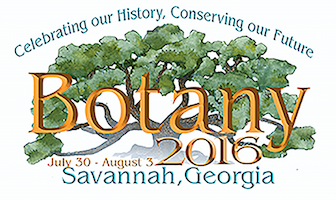| Abstract Detail
Systematics Sharber, Wyatt [1], Whitlock, Barbara A. [2]. Independent evolution of trithecate anthers in Ayenia and Megatritheca (Malvaceae: Byttnerioideae). Estimating the frequency and direction of changes in stamen number is essential to understand the evolution of floral morphology and pollination ecology. The Byttnerioideae exhibit remarkable variation in androecial structures, including stamen, theca, and staminode number. Two genera with particularly striking androecia are Ayenia and Megatritheca, both with unusual trithecate anthers. Although Ayenia and Megatritheca have long been recognized as closely related to the dithecate Byttneria and Rayleya, relationships among species in the four genera are unclear. Here, we test the hypothesis that Ayenia and Megatritheca are sister taxa, and that trithecate anthers evolved once within Byttnerioideae. Phylogenetic analyses of chloroplast DNA sequences indicate that Megatritheca is sister to a clade containing Ayenia, Byttneria, and Rayleya. Furthermore, Ayenia is nested within Byttneria. Thus, trithecate anthers evolved independently in the Ayenia and Megatritheca lineages. We hypothesize that the transitions to trithecate anthers may be related to parallel increases in flower size in Ayenia and Megatritheca relative to Byttneria and Rayleya. We investigate correlations between flower size, thecae number, and theca size.
Log in to add this item to your schedule
1 - University of Miami, Department of Biology, 1301 Memorial Dr., Coral Gables, FL, 33146, United States
2 - University of Miami, Department of Biology, Coral Gables, FL, 33124, USA
Keywords:
Malvaceae
Ayenia
Megatritheca
anther evolution
floral evolution.
Presentation Type: Oral Paper
Session: 12, Rosids II/Basal Asterids & Asterids I part A
Location: 102/Savannah International Trade and Convention Center
Date: Monday, August 1st, 2016
Time: 2:45 PM
Number: 12006
Abstract ID:875
Candidate for Awards:None |



